Spring and summer flowers have given way to fall color. Now is the perfect time to bring an evergreen tree or shrub into your landscape to enjoy this winter.
Add a punch of blue or green in an upright or round shape with broadleaf or needle texture by planting holly, boxwood, spruce, juniper, or pine! Plant a single specimen for a focal point. Try a hedge for privacy or a deciduous plant backdrop.
Need help selecting the right evergreen? Bring a few photos and general measurements and our team will gladly provide some guidance. We’re also available for delivery and planting.
atlas cedar
Cedrus atlantica
A beautiful specimen tree with silvery blue to bluish-green needles. Develops an attractive, rugged form when given the space to grow freely. Aromatic oil the tree produces is a natural deterrent for insects, and wood is commonly used in chests and furniture drawers. Grows to a height of 40–60’ and a spread of 30–40’. Grows in acidic, alkaline, loamy, moist, rich, sandy, silty loam and well-drained soils. It prefers moist soil but can tolerate moderate drought. Requires a minimum of four hours of direct sunlight each day. A weeping form (pictured), 'Glauca Pendula', has gracefully arching branches and tops out at a much smaller ornamental size of 12'.
‘Taylor’ juniper
Juniperus virginiana ‘Taylor’
'Taylor’ is an upright narrow columnar eastern red cedar selection that grows up to to 30’ tall but only 3’ feet wide. Silvery blue-green foliage is attractive throughout the growing season. Foliage may take on some bronze tones in winter. Full sun to very light shade (6 hours of sun or more)
The parent of this native selection is native to Douglas County, Kansas.Colorado blue spruce
Picea pungens
These North American native evergreen selections grow in high elevations where temperatures are cool, so they should be sited with some relief from afternoon summer heat and watered regularly until well established and during periods of drought. ‘Glauca Fastigiate’ (columnar blue) Narrow growing spruce with striking blue coloring. Useful evergreen for areas where horizontal space is limited but height is desired. Slowly grows to 30-35’ tall and 6–10’ wide. ‘Glauca Slenderina® Pendula’ (weeping blue) A weeping form of Colorado blue spruce, which is more narrow and blue than other varieties. Introduced by Eshraghi Nursery. ‘Fat Albert’ (dwarf Colorado blue) Dense, broad, upright pyramidal shape, closely-spaced, ascending branches and silver-blue needle color. Grows about 12” per year to 10-15’ tall, typically 10’ by 7’ in about 10 years. Oblong 2-4” long cones are greenish when young and mature to light brown. Zone 3 cold hardy. ‘Bakeri’ (Colorado blue) Grows to be about 30’ tall at maturity, with a spread of 18’ at a slow rate, and under ideal conditions can be expected to live for 80 years or more. Dense, silver-blue needles. Will not tolerate any standing water. ‘Hoopsi’ (Colorado blue) Dense, pyramidal cultivar noted for excellent silvery-blue color. Typically grows to 30-50’ tall and spreads to 15-20’. Pendulous seed cones emerge magenta-purple. ‘Pendula’ (weeping blue spruce) Large weeping blue to green Spruce. Needs to be staked when young, or it will become a large groundcover. Picturesque as it ages and develops character. Grows as high as you stake it!
dwarf Alberta spruce
Picea glauca ‘Conica’
Cone-shaped dwarf conifer with small, dense green needles. Excellent as a miniature Christmas tree or as an artistically pruned topiary. Makes a formal statement in the garden. Superb container specimen, can even survive winter above ground. Zones 2-8.
Eastern white pine
Pinus strobus
Grows at a fast rate, with height increases of more than 24” per year to a height of 50–80’ and a spread of 20–40’ at maturity, although more often they top out at about 30-35' in our area. Grows in acidic, moist, well-drained and dry soils. Soft, flexible, long, slender, blue-green needles 5” in length grow in bundles of 5. 3–8” cones provide pine seeds for rabbits, red squirrels and many birds, and provide nesting sites for woodpeckers, common grackles, mourning doves, chickadees and nuthatches, to name a few.
'Fastigiata' is a columnar selection that grows 30-40' tall with a spread of only 7-10'.
‘DeGroot’s Spire’ arborvitae
Thuja occidentalis ‘DeGroot’s Spire’
Hard-working, versatile, native evergreen. The narrow, pyramid shape makes it a natural choice for windbreaks. It requires almost no care when used as a hedge or screen. Pairs of these hardy trees make great accents for doors and garden gates. Single trees soften house corners. Slow growing, reaching 20 ft. tall and 4 to 5 ft. wide.
‘Wintergreen’ boxwood
Buxus sinica var. insularis ‘Wintergreen’
(formerly microphylla var. koreana ) The most adaptable boxwood for hedges and specimen plantings. The backbone of the garden.
holly ‘Blue Princess’
Ilex meserveae ‘Blue Princess’
Handsome hedge, background plant or specimen desired for its lustrous blue-green foliage. Moderate grower to 6–8 ‘ tall, 3–6’ wide. Hardy to zone 5. Prune in winter. Plant with m. ‘Blue Prince for berry production.
‘Angelica Blue’ Juniper
Juniperus chinensis 'Angelica Blue'
Bright blue, fine-textured foliage intensifies in cool winter temperatures. Creates excellent texture and color contrast when mixed with dark green foliaged plants.
‘Gold Lace’ juniper
Juniperus chinensis ‘Gold Lace’
Gold foliage tips branches. An outstanding contrast plant. 3–4’ tall, spreading 5–6’ wide. Hardy to zone 4.
yew
Taxus x media
Add some midcentury evergreen flair as the backbone of your landscape. Fitting into the natural garden when left to grow without shaping, yews can be also formed into topiary balls and columns for a more formal or arty approach. ‘Densiformis’ (dense spreading) Semi-dwarf, dense, spreading, evergreen shrub which typically grows in a mound to 3-4’ tall but spreads to 5-7’ wide. Yews are classified as conifers, but female plants produce red, fleshy, single-seeded fruit instead of cones. ‘Densiformis’ is a female cultivar. Lustrous, dark green, thin-needled foliage. The popular Taxus x media hybrid cultivars are crosses between Japanese yews (Taxus cuspidata) and English yews (Taxus baccata). Tolerates a wide range of soils as long as drainage is good. Also tolerant of full shade and considerable pruning. Prune or shear as desired in early spring before new growth appears. ‘Hick’s’ (upright) Dense, narrowly columnar, evergreen shrub matures to a height of 10-12’ with a spread of 3-4’ wide after 20 years. More often seen as a 9-12’ tall plant. ‘Hicksii’ is available in both male and female types. Two-ranked foliage is lustrous, dark green above and lighter green below.
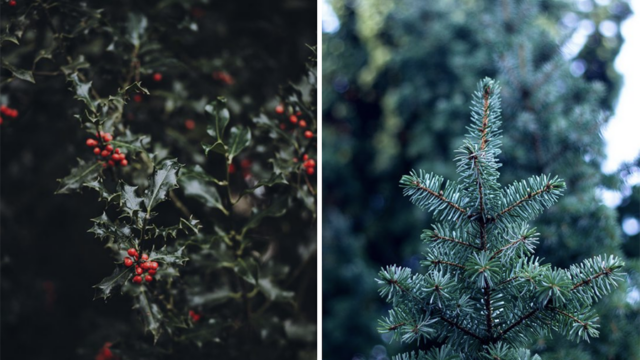
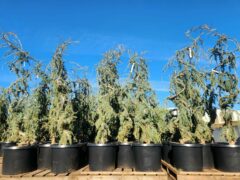
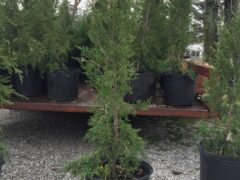

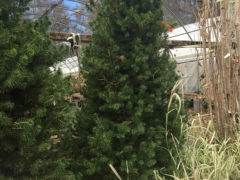
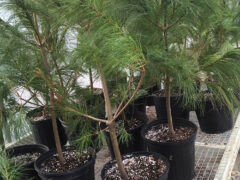
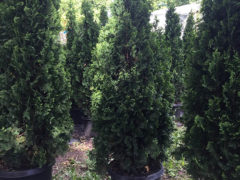
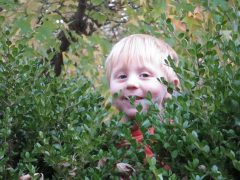
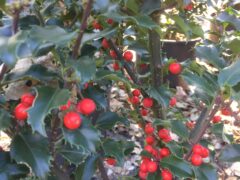
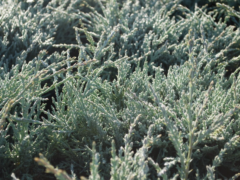
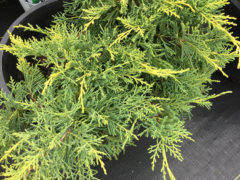
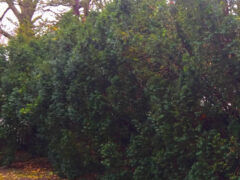
Aren’t Holly plants very hardy? I see them around Lawrence,
Kansas often most are lower growing than 6-8′. Often on a northern exposure of a house or business. I’ve always wanted some, not sure what rype are hardy to my zone, south of Lawrence on a high, southern slope of the Vinland Valley.
They are tough, hardy to Zone 4!